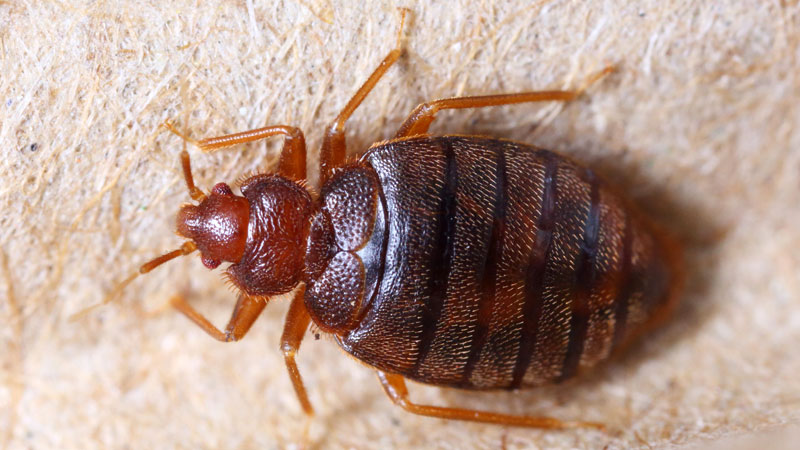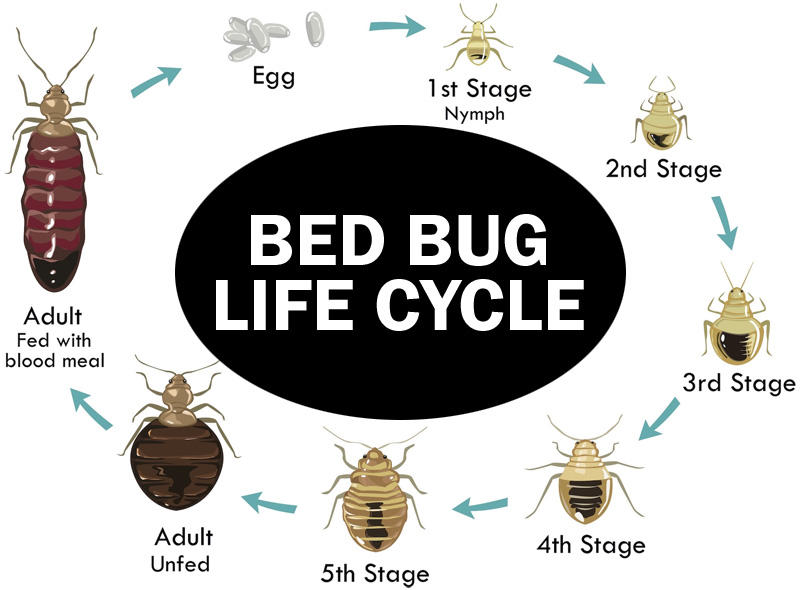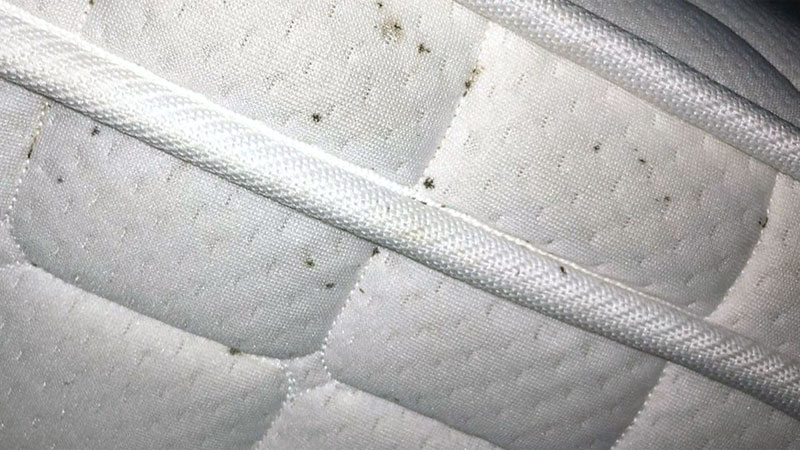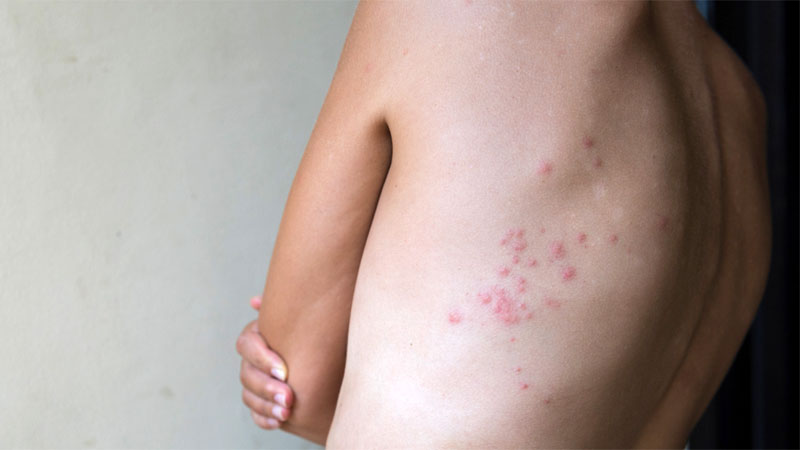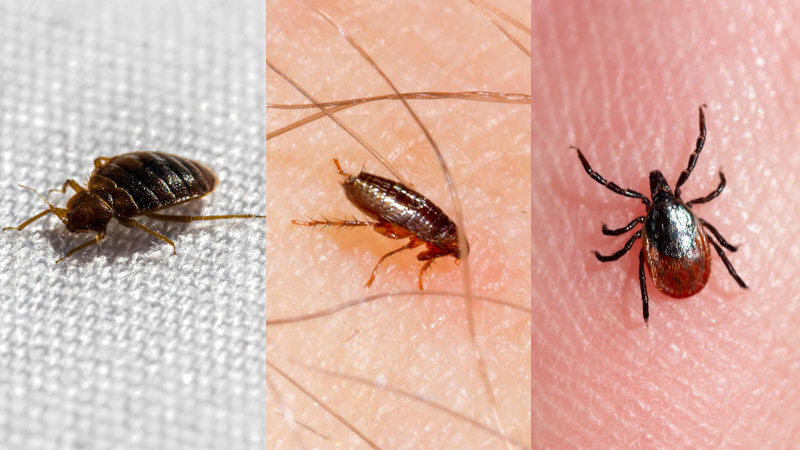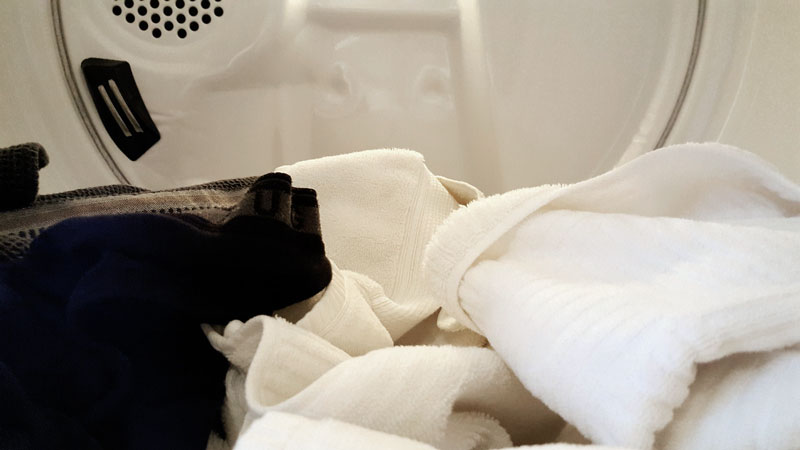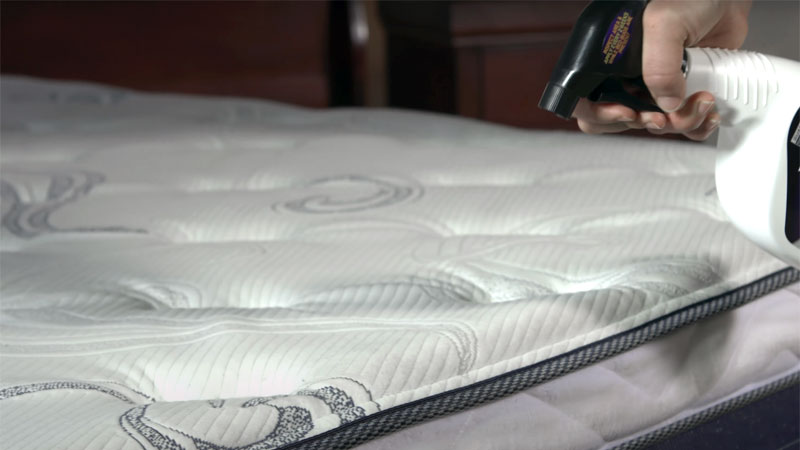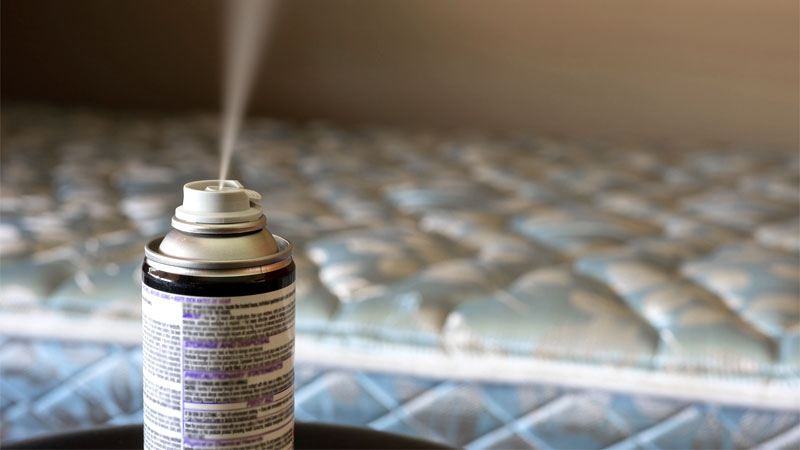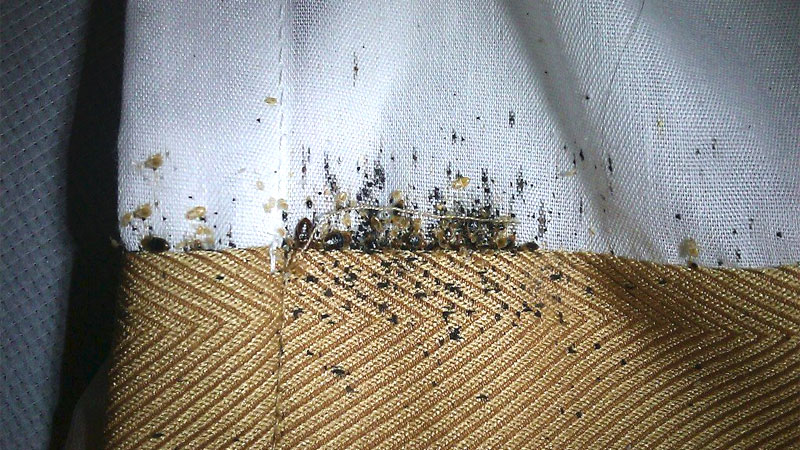“Good night, sleep tight. Don’t let the bed bugs bite!” You’ve probably heard this little mantra countless times during your life, but have you ever stopped to consider just how unique it is?
It’s been proven fleas were responsible for the Bubonic Plague, but there’s no bedtime mantra about them. Or what about ticks which carry Lyme disease? Or raccoons which can transmit rabies?
Indeed, bed bugs are an unusual plague all on their own. They’re something spoken of in the same hushed whispers as one might a serial killer and everyone’s bound to encounter them at some point in their lifetimes – usually without ever knowing it.
But what makes these pests so notorious and are we all just overreacting? Or is there an actual threat involved? And more importantly, how do you get rid of bed bugs when they appear?
Getting to Know Bed Bugs
Knowing your enemy is so important that some say you should know your enemies even better than your friends. And when it comes to a bed bug infestation, forewarned is definitely forearmed.
The more you know, the less likely you are to wake up looking like a pepperoni pizza every morning. Just be warned, there are a lot of myths out there, so do your homework.
What is a Bed Bug?
These little critters are only about the size of an apple seed and have reddish-brown bodies. Their abdomens are either rounded (females) or pointed (males) and have a similar overall shape to many beetles.
Due to their shape, there are several other bugs commonly mistaken for bed bugs.
Types of Bed Bug
Yes, there are actually more than one species of bed bug. In fact, there are at least 12 species in the genus from which bed bugs come. Thankfully, most of these don’t normally feed on humans and include bat bugs, pigeon bugs (Cimex columbarius), and the closely related chimney swift bugs (Cimexopsis nyctalis) and swallow bugs (Oeciacus hirundinis).
While it’s possible for all of these to bite people, there are only two species commonly referred to as bed bugs. These are the tropical bed bug (Cimex hemipterus) and the common bed bug (Cimex lectularius).
Of course, there are bugs in other genera which are also commonly called bed bugs or bed worms, but these won’t actually bite humans.
While the two main species of bed bugs are very similar, there are some slight differences in the lengths of their lifecycle stages, as well as both having their own resistances to certain treatment methods.
See Also: What Bit Me? (Identifying Bug Bites)
Bed Bug Life Cycle
As there are two major species of bed bug, the life cycle can vary slightly, although most people will encounter the common bed bug. For simplicity’s sake, the following timeframes contain a range that includes both species.
That said, bed bugs have a surprisingly long lifespan of about four to six months with some recorded as living as long as nine months. The eggs take five to ten days to hatch, and it only takes about seven weeks for a bed bug to pass through five instars and reach adulthood.
This means the rest of the time is spent with females laying eggs and males making sure the females remain fertile.
An adult female can store sperm for several weeks, and when she lays her eggs, it’s at a rate of five to seven per day. She can continue to lay eggs for a few weeks before needing to breed again.
What Attracts Bed Bugs?
Bed bugs are attracted primarily to three things: body heat, carbon dioxide, and darkness.
But that’s not to say there aren’t other things that can draw them out. For example, a hot summer’s day can dehydrate them and force them to come out in search of food.
Kairomones
A common myth that has some basis in truth is that bed bugs are attracted to dirty laundry and messes. In reality, messes are just somewhere else for them to hide and they can use both dirty and clean laundry for hiding purposes. However, there’s still that grain of truth that leads to the myth persisting – kairomones.
Humans, much like other animals, have a special means of communication. Called kairomones, these are just like pheromones but are used exclusively for communication. In today’s “clean” society, we no longer actively use this form of communication, although the body does still produce them.
Kairomones (and to a lesser extent pheromones) will thus accumulate in your clothing when you wear them, which can sometimes draw out bed bugs while they’re searching for food.
Preferred Blood Meals
There is also some evidence that bed bugs may target certain blood types, but only if they fed exclusively on that blood type from hatching. In other words, if you are type AB and usually sleep alone, the bed bugs will be more likely to target you than your lover who came over this weekend and has type O blood.
But if you give them the bed and go sleep on the couch, those same bed bugs will find your partner to be just as tasty a meal. Think of it like growing up on Wendy’s and suddenly finding yourself stuck at McDonald’s.
Where Do Bed Bugs Hide?
While the obvious answer is beds, the truth of the matter is far more complex. These pests tend to hide within a few feet of places where people like to sleep. You may find them in dirty laundry or clutter, but they can also be found in clean linens.
They like cracks and crevasses, being small enough to hide in and behind:
- Baseboards
- Bed Frames
- Box Springs
- Couch cushions
- Crown molding
- Joints in furniture
- Mattress seams
- Picture frames
One of the biggest mistakes you can make when facing an infestation is to conclude they’re only in the bedroom.
Five Signs of Bed Bugs
Contrary to popular belief, it’s entirely possible to have a bedbug infestation and not even know it. Look for the following signs when changing your bedsheets:
- Bite Marks: Contrary to popular belief, not everyone exhibits the telltale bite marks. However, a confirmed bite proves the presence of bed bugs.
- Casings: Like all insects, bed bugs molt. Finding their shed casings is a clear sign of an infestation.
- Direct Sighting: If you see what appears to be a bed bug, try to catch it. Clear tape is great for this. One confirmed bed bug means there are likely a lot more.
- Recent Exposure: If you’ve recently been to a confirmed source of bed bugs, you may have brought some home. Always perform a thorough inspection if you find out you’ve been exposed.
- Tiny Black Spots: When you see tiny black specks in the mattress, sit a damp paper towel on top. If they expand into little red blood spots, you probably either have bed bugs or fleas.
Can Bed Bugs Live In Your Hair?
There is a lot of confusion regarding this matter, and the simple answer is no. But at the same time… sort of yes. See, the problem lies in how you interpret the word “lives’.
Yes, bed bugs can escape into your hair if interrupted while feeding or while hitching a ride, so in that respect, they CAN “live” in your hair for a short amount of time.
However, bed bugs lack the thin bodies of fleas or the claws of mites, so it’s very difficult for them to hold onto a human. This is why they tend to leave feeding tracks instead of staying in one spot the whole time.
Likewise, they don’t like heat, and hair exists to help hold in body heat. As a result, they try not to hang around in your hair any more than absolutely necessary and are easily dislodged even if they do.
So in this latter sense, no, bed bugs CAN’T live in your hair.
Can Bed Bugs Live On or Bite Pets?
As mentioned, these bugs don’t have the same design advantages as fleas and ticks. Holding onto a cat or dog is extremely difficult, and their bodies can’t navigate the thick fur.
As a result, it’s very rare (to the point many don’t believe it’s even possible) for a bed bug to successfully bite a pet and impossible for them to live on one or even hitch a ride unless the pet is wearing clothing.
Do Bed Bugs Fly?
If you flick them hard enough, they can fly quite a distance. However, without human help, these little pests can only fly as fast as their little legs carry them.
They have no wings and their legs aren’t designed to allow them to jump, so scurrying about is their only method of travel.
Are Bed Bugs a Health Risk?
This is one of the biggest areas of misinformation when it comes to pests, as a particular species can often be blamed for the actions of another. For example, suspected bed bug bites may actually be some other critter’s bite. This means you might be at risk of an illness that wasn’t actually caused by a bed bug.
In fact, while bed bugs carry disease, only one is known to be transmitted to humans, and even then only under certain conditions. The frass or poop of a bed bug that is feeding near a person’s mouth may end up in the mouth. This can lead to Chagas disease, caused by the parasite Trypanosoma cruzi.
Symptoms can range from mild to life-threatening. In fact, over 40 different diseases and pathogens have been found in bed bugs that can affect humans, but few can actually be transmitted by the bugs.
Instead, the health risks associated with bed bugs are largely cosmetic ones. The bite of a bed bug may have little or no effect on most people, possibly resulting in red, itchy circles. These effects may be worse in individuals with allergies or asthma.
Bed Bugs vs Fleas vs Ticks
While all three of these pests are parasitic, there are some key differences between them.
Fleas have strong back legs that allow them to jump surprisingly well. Their bodies are flat, but vertically aligned to help them slip through animal hair more efficiently. Fleas are most commonly found attacking animals but happily attack humans as well. They will leave their poop which almost looks like actual fleas.
Ticks are actually arachnids. They prefer animals and their bodies will swell when they feed.
Bed bugs darken in color when they feed. They prey almost exclusively on humans unless the only food source is a pet (and even then, they have to find a spot on the pet that has exposed skin).
They have flat bodies so they can crawl under things, but are inefficient at climbing through both hair and fur.
See Also: 9 Bugs That Look Like Sesame Seeds or Poppy Seeds
Getting Rid of Bed Bugs
Normally, this is where we’d tell you how to eliminate a pest from specific areas of the home. But bed bugs are a little different.
While most often found in the bedroom, they can end up anywhere humans are likely to congregate (and/or remain stationary for long periods of time). In some cases, they may infest a toy or piece of clothing. This may put them in the attic or basement unintentionally when you move that object.
For this reason, a home inspection is necessary, especially if you think you’ve been exposed to bed bugs.
Once you’ve concluded bed bugs are present in a room, the bed bug treatment plan may be broken down into three main categories: heat, sprays, and bombs (usually in that order).
There are a lot of things bed bugs don’t like that may keep you safe for a night or two. However, if you don’t deal with them, they’ll eventually brave repellents for a meal. Thankfully, you can eliminate bed bugs on your own, contrary to what you tend to hear.
Method #1 – Scorch Them
This is an instant killer, but only at high temperatures. 140 degrees can kill bed bugs almost instantly. You can technically go as low as 122 degrees and kill them within several minutes.
Dryers, steamers, and the old fashioned iron can all be useful tools if used correctly. The heat needs to be applied evenly, so take your time with this step.
Bed bugs sometimes react to temperature, which is why there are also some traps out there that use heat to lure bed bugs in. They’re photophobic, meaning they hide when there’s light, but you may still find them coming out in August when the summer heat dehydrates them.
However, they’re adapted to seek out temperatures resembling human body heat, since this means food.
Clothes Dryer
For this step of the cleaning process, locate anything that can be exposed to high heat. This includes laundry, bedding, curtains, stuffed animals, etc. Put them into a sealable bag so any bed bugs can’t escape. Then toss those into the dryer on the highest heat setting.
It’s possible a run through the washing machine can kill nymphs and adults. However, the hot water and soap can take a long time to kill bed bugs, and won’t affect the eggs.
Fabric Steamer
Go rent a steamer if you don’t own one (and honestly speaking you should – they’re amazing and kill all sorts of pests (ie: carpet beetles) and bacteria). Black+Decker makes a great handheld steamer at a good price.
You can use the steamer to get any bed bugs in your carpet and mattress, as well as other surfaces that can handle both heat and moisture. Don’t rush this step or you may not completely kill the bugs and their eggs.
Iron
Back in the 1800s, children felt blessed to get a lump of coal for Christmas because that was often the only source of heat for poor families. A single hot coal would be put in a cast iron pan and slipped under the sheets to warm a bed for use.
These days, the term “iron” refers to the descendants of these devices, which are now used mainly for ironing clothes.
A quality iron can get some pretty high temperatures going and, if used carefully, make a good substitute for steamer in a pinch. You can even iron your bedsheets while on the bed (if using a mattress cover) so the bed will be crisp and warm when you slip into it.
Most households have an iron that should do the trick. If you’re looking for a new one, PurSteam and Black+Decker make two of the best irons for the money.
Do I Have to Throw Out My Mattress?
Back in the day, a case of bed bugs meant the expensive process of replacing your mattress. However, times have changed and there’s a much cheaper alternative.
A good bed bug mattress cover is a great option for most mattresses. These special covers are airtight and waterproof, and are designed to stay on more or less permanently.
Bed bugs can survive at least two months between meals. However, any bugs or eggs trapped inside will eventually die out. Best of all, you can use your steamer or even a damp cloth to clean the covers without removing them from the bed.
Method #2 – Spray Them
Bug sprays can be all the rage, but are they really all that good? The answer almost always comes down to contact.
There are a lot of quality bed bug sprays out there that can be quite effective (Ortho Home Defense being a good option). But before using them, you’ll want to identify the species of bed bug you’re dealing with and make sure it’s not immune to that pesticide. Some are merely spot treatments while others are residual.
You can also make your own homemade bed bug sprays. Various options include bleach, essential oils, garlic, and rubbing alcohol. Depending on the type of spray you use, it may serve to kill the bed bug on contact or merely repel them.
Be warned, your mileage will vary when using these products. Also, frequent use may result in the bed bugs building up an immunity or resistance to that spray’s active ingredients.
See Also: Does Fabuloso Kill Roaches, Bed Bugs, and Flies?
Method #3 – Bomb Them
Often considered the last resort, bed bug bombs (foggers) are no joke and require a lot of preparation, especially in places such as the kitchen. When working in the kitchen, it’s important to remove all food items.
You may also wish to remove dishes and utensils, checking for bugs as you go. Remember, any food left behind will have to be thrown out and every appliance thoroughly scrubbed when the bombing is over.
Recommended Product: Hot Shot Bed Bug and Flea Fogger
No matter what room you’re in, bombing is a long process. You will need to remove any objects you can, inspecting everything to make sure there are no bed bugs hiding.
All windows and doors will have to be sealed to prevent the toxic gasses from escaping, and the bomb will require several hours to do its job. Once it’s finished, some brave soul will have to don a mask (no handkerchiefs here, please) and enter the room to open all the windows.
Give the room time to air out, keeping the doors sealed so gas doesn’t seep into the rest of the house. Be sure to keep any kids or outdoor pets away from the open windows. A fan may help speed the process.
When it’s all over, you’ll have to get some cleaning supplies and scrub down every inch of the room to get rid of toxic residues. Don’t allow kids or pets into the room until you’ve scrubbed down everything (and we mean EVERYTHING).
Generally speaking, you will need to use another bomb a week or two later. This is needed to kill any new nymphs, so it’s often best if you don’t refurbish the room until after the second bombing.
Method #4 – Call In the Pros
For a larger active bed bug infestation it’s best to call a professional. This is also a great move if you’re not comfortable using chemical treatments on your own. Hiring a bed bug exterminator means they’ll perform a thorough inspection using tools you may not have on-hand.
Professional pest control companies have access to expensive bed bug treatments. In most cases they’ll fumigate, then come back for a follow-up. However, in some instances, they’ll also use heat treatments.
Heat treatments require specialized equipment, which can be very expensive but highly effective in skilled hands.
The Takeaway: Notes on Protecting Against Bed Bugs
Here are some little extra tips to help you cope with bed bugs (or the possibility of them) while preparing to go on the offensive.
Bite Control
Just because your partner shows no symptoms of bites doesn’t mean they aren’t getting bit. Sometimes a person can be asymptomatic while someone else could have a severe (and in rare cases life threatening) reaction.
Sometimes it’s just a matter of convenience. Try trading sides for a couple nights to see if you were just closer to their hiding spot.
Long, tight fitting clothes are another great tactic. The bed bugs are too clumsy to get under them or bite through them.
Bug Traps
There are some surprisingly effective bed bug traps out there that use tactics such as heat, smells, and carbon dioxide to lure bed bugs to their doom.
While not an effective long-term solution, these traps can help with population control while you work on exterminating the little buggers.
Cleanliness
Remember when we said that bed bugs only like clutter because they have more hiding spots? Well keeping your house clean can really help reduce places for them to hide. You may even kill some of the critters in the process.
Doing laundry on high heat settings can destroy a lot of them. Additionally, ironing some of your clothes before putting them away will not only make them look nicer but can kill any eggs.
Because bed bugs lack any type of hook or claw mechanism, the vacuum cleaner can be a deadly enemy. Just be sure to safely dispose of any bags or canister contents after.
Finally, washing and polishing your wooden furniture and floors can help repel any bed bugs trying to hide in the crevasses or joints and may even kill a few on contact.
- How to Get Rid of Hawks - March 8, 2024
- How to Get Rid of Pill Bugs (Rolly Pollies) - March 1, 2024
- How to Get Rid of Groundhogs (Woodchucks) - February 5, 2024

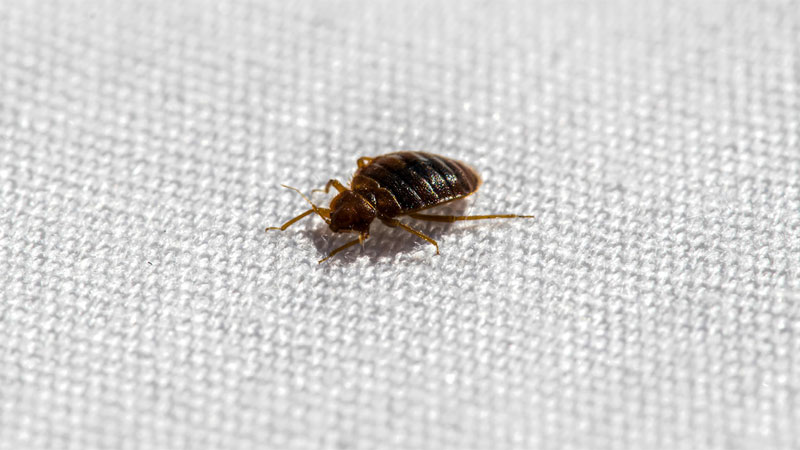
 Just tell me how to get rid of ’em.
Just tell me how to get rid of ’em.